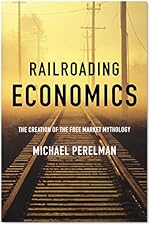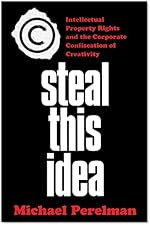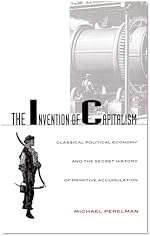Archive for July, 2006|Monthly archive page
A Hint of the Potential of Open Sourcing
This example is not open source, but it suggests the potential of opening processes up.
Musgrove, Mike. 2006. “Lego’s Robot Redux: Hackers, Longtime Fans Help Revamp Kits To Build Better Gizmos.” Washington Post (29 July): p. D 1.
“In deciding to revamp the aging Mindstorms robot line, Lego turned to its most faithful core of fans: enthusiasts and hackers who had banded together to form their own online support network. In 2004, Lego e-mailed four of its biggest Mindstorms fans across the United States. The team members spent 10 months advising Lego as the Mindstorms Users Panel, discussing their dream lists of what the next kit should and should not be.”
“Lego’s star chamber, later expanded to 14 members, helped shape what the new robots will be able to do and which parts come in the 571-piece kit. One member was even able to pressure the company into building a part that makes its debut in the new Mindstorms set — a rare event at Lego, which treats every individual piece with reverence. The new part is a connector that allows two long pieces to be joined at a 90-degree angle.”
“The resulting toy has much more up-to-date technology than the original set, including a USB 2.0 port for fast downloads and Bluetooth for wireless connections. With the right parts and programming, a Mindstorms robot can dance in response to sounds or follow the beam of a flashlight. Lego even decided to embrace the hacker community, which has spent years altering the electronic brain of the system to make the robots perform beyond what Lego had intended. The company is making public the new source code, which is the programming that runs the unit, and allowing users to modify it and share their changes, as long as they promise not to profit from it.”
Making Universities Operate More Like Business
Conservatives have long demanded that academia adopt common business practices to improve education. I’m happy to report that public universities California have gone a long way in that respect.
Here is an excellent report from the San Francisco Chronicle.
Jim Doyle. 2006. The money trail: How former top CSU administrators brought home big bucks with special assignments. Monday, July 17,
Seven former California State University executives were each offered hundreds of thousands of dollars to work on special projects for the chancellor’s office following their retirement from top administrative positions. In most of these assignments, there was no requirement for a final work product or written report.
“I didn’t need to tell the (Board of Trustees) about the assignments. I have the responsibility to give those assignments,” said Chancellor Charles B. Reed, the university system’s top executive. “I shared a copy of (private correspondence) with the chair of the board.”
Here is the information on our former president and a former vice president who became the president of Sacramento State.
Manuel A. Esteban
President of Cal State Chico (1993-2003) [an a good guy by the way]
Took a “transition year” at a salary of $208,248 to prepare for his return to teaching, but decided instead to retire as a faculty member and — with the governor’s “golden handshake” program — received two additional years of service for CalPERS retirement benefits. The next year, he worked as a part-time special assistant to the chancellor for $93,711. He spent about eight months assisting with presidential evaluations and working with the McConnell Foundation and Shasta Community College to study how best to serve students in the northernmost parts of the state.
“I’ve always felt that we were treated fairly in the CSU,” Esteban said. “I received a sabbatical in which I was trying to retool myself to go back to the faculty. At the end of that I decided not to go back to the faculty. I had been out of the classroom for 10 or 12 years. … When I was about to retire, I was able to get an additional two years of service credit. It was pure luck.”
Donald R. Gerth
President of Cal State Sacramento (1984-2003)
Writing a history of the CSU system for the chancellor’s office. Under the terms of his five-year agreement, his work on the CSU history and “other specific projects as assigned” may continue until 2008. His annual salary for part-time work is $54,372. He also has clerical support of about $36,000 a year.
“I hope to get it done by the end of five years, or actually by the next academic year,” Gerth said. “My wife claims I’ve flunked retirement. It’s turned into a full-time project. I’ve got the thing thoroughly outlined. I haven’t started to write yet.”
Gerth, who hopes to finish his research in the fall, said he writes a “very general” letter to the chancellor once a year to give him a progress report on the project.
The article lists another of similar instances.
The University of California behaved similarly.
The result, of course, will probably be to cut the budget, then hire a new vice president to oversee the financial stringency.
From the chief economist at the International Monetary Fund
Rajan Raghuram G. and Luigi Zingales. 2004. Saving Capitalism from the Capitalists: Unleashing the Power of Financial Markets to Create Wealth and Spread Opportunity (Princeton: Princeton University Press).
276: “Capitalism’s biggest political enemies are not the firebrand trade unionists spewing vitriol against the system but the executives in pin-striped suits extolling the virtues of competitive markets with every breath while attempting to extinguish them with every action.”
Exposing the telecom ripoff
BusinessWeek just published a terrific article, exposing the giant telecom corporations as fraudulently winning regulatory support that will solidify its control over the Internet. In part, justification is to promote the technology, but the article shows their research commitment is minimal.
Gimein, Mark. 2006. “The Phone Companies Still Don’t Get It:
They Block Competition and Charge Too Much.” Business Week (31 July): pp. 51-3.
http://www.businessweek.com/magazine/content/06_31/b3995070.htm
51-2: “In case you haven’t been keeping score, after the original phone company, American Telephone & Telegraph, was broken up in 1984, the country was left with eight major regional telcos. Over the past decade these companies proceeded to gobble one another up. Now there are four: AT&T, Verizon, BellSouth, and Qwest …. The “new” AT&T is actually the rechristened SBC, based in Austin, Tex., which acquired the venerable name last year — and it’s in the process of buying BellSouth. That will leave two phone giants, Verizon and AT&T, and the much smaller Qwest. The biggest wireless carriers are Verizon Wireless, majority owned by Verizon, and Cingular, which is soon to be wholly owned by AT&T. It’s not exactly the return of the old Ma Bell monopoly — the world has gotten way too complicated for that — but that’s a lot of power in the hands of just two companies.”
52: “One way in which these companies are very different from the old phone monopoly is that while the original AT&T had a world-class research operation, its successors don’t. One of the signal facts of the communications revolution is that virtually all the new technologies that made it possible were developed outside the phone world. Last year, Verizon’s revenue came in at nearly $80 billion. AT&T (without BellSouth or Cingular) had revenue of $44 billion. And yet while Intel Corp. spent $5.1 billion last year on research and development, AT&T spent just $130 million. The word “research” doesn’t even appear in Verizon’s annual report.”
52: “The phone giants have even used “innovation” as a key justification for their aggressive merger wave. Last year, when SBC was buying the remnants of AT&T, SBC Chief Executive Edward E. Whitacre made sure to note that by merging, the combined company would have “the intellectual and financial resources to spur innovation”.”
Resource cost of cities
Peter Temin has published a fascinating article regarding economic conditions in the early Roman Empire. The story he tells describes the remarkable economic progress that the Romans had achieved.
Temin, Peter. 2006. “The Economy of the Early Roman Empire.” The Journal of Economic Perspectives, 20: 1 (Winter): pp. 135-51.
One particular graph suggests another side to his story. It shows the price difference between grain in Rome and in other parts of the Mediterranean region on the vertical axis and the distance from Rome on the horizontal axis. The graph has an excellent fit. The closer to Rome, the higher the price.
The picture I get from the graph is one of Rome as a black hole, sucking in resources from the rest of the Empire. The closer to Rome, the stronger the demand. Temin, in effect, was confirming Lewis Mumford’s thesis that urban life depends upon the surrounding areas supplying its resource deficits. The provision of these resources often creates environmental havoc.

Stem Cell Patents
The Foundation for Taxpayer and Consumer Rights is suing to overturn the the Wisconsin Alumni Research Foundation patents on stem cells. The organization site gives the URLs for the Wall Street Journal and Los Angeles Times articles.
The former is especially good
http://www.consumerwatchdog.org/nw/?postId=6583 http://www.consumerwatchdog.org/nw/?postId=6573
I apologize for not formatting the URLs correctly.
Random Material
I don’t have this book yet, but I heard her radio interview yesterday and it sounds fascinating. The argument is that slavery was a major factor in determining the system of taxes in the United States.
Einhorn, Robin L. 2006. American Taxation, American Slavery (Chicago: University of Chicago Press).
Laws were passed in the late eighteenth century requiring the uniformity of taxation, meaning that no species of property could be taxed at higher rates than others. The purpose, of course, was to protect slave owners. Later, the courts began to interpret the clause to protect corporate property, especially railroads.
I just read yesterday’s front-page story Wall Street Journal:
Lauren Etter. 2006. “Feeling the Heat: For Icy Greenland, Global Warming Has a Bright Side.” Wall Street Journal (18 July): p. A1.
After years of denying that global warming exists, the paper is now gloating that in Greenland agriculture is doing far better as the glaciers melt.
Extortion and Intellectual Property???
http://www.businessweek.com/magazine/content/06_27/b3991401.htm
Nathan Myhrvold, Microsoft’s first chief technology officer, has a plan for Intellectual Property. First he gathers leading scientists and patent attorneys to brainstorm and come up with ideas that his company, Intellectual Ventures, can license to others. They plan to produce nothing but patents. You know what comes next.
The company also offers to “immunize” corporations from patent suits for a $50 million fee. The company will go around and buy patents before other patent trolls do, thereby “protecting” the clients. Others, of course, will have to face the consequences of not having ponied up the $50 million.
Does the word “blackmail” have any relevance here?
 Comments (5)
Comments (5)
 25 – The Confiscation of American Prosperity: From Right-Wing Extremism and Economic Ideology to the Next Great Depression
25 – The Confiscation of American Prosperity: From Right-Wing Extremism and Economic Ideology to the Next Great Depression 30 – Manufacturing Discontent: The Trap of Individualism in Corporate Society
30 – Manufacturing Discontent: The Trap of Individualism in Corporate Society Class Warfare in the Information Age
Class Warfare in the Information Age Railroading Economics: The Creation of the Free Market Mythology
Railroading Economics: The Creation of the Free Market Mythology Steal This Idea: Intellectual Property Rights and the Corporate Confiscation of Creativity
Steal This Idea: Intellectual Property Rights and the Corporate Confiscation of Creativity The Invention of Capitalism: Classical Political Economy and the Secret History of Primitive Accumulation
The Invention of Capitalism: Classical Political Economy and the Secret History of Primitive Accumulation The Perverse Economy: The Impact of Markets on People and the Environment
The Perverse Economy: The Impact of Markets on People and the Environment